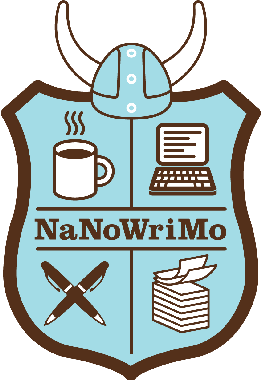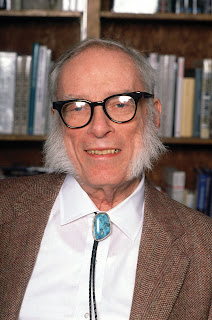Every year, during November, thousands of budding authors take part in the National Novel Writing Month (NaNoWriMo). They’re using their spare time during these thirty days to write a novel.
NaNoWriMo Overview
That may sound impossible, but over 400,000 people will participate this year. Perhaps 20% of them will meet the requirements, to write 50,000 words in 30 days. When they’re done, they’ll feel immense relief in December and will relax after the strain of writing so much.
Of the “winners” (who don’t really win anything), many will edit their manuscript and some will see their work published. A handful might make some money from sales.
Purpose
If you scoff at the low success rate, you’re missing the point. NaNoWriMo aims to get you accustomed to writing fast, to spilling the words out. You can always go back and edit 50,000 words to improve the prose, maybe molding the manuscript into a suitable shape for publication. At least you have a first draft to work from, and that’s further than most wannabe novelists get.
Some Math
Simple division tells me a NaNoWriMo participant must scribble, on average, 1,667 words every day during November to accomplish the goal. That’s almost 1,700 words. Every day. Why does that wordcount number ring a bell?
Isaac Asimov
The brilliant and prolific science fiction author Isaac Asimov once said, “Over a space of 40 years, I published an average of 1,000 words a day. Over the space of the second 20 years, I published an average of 1,700 words a day.”
There’s that 1,700-word number again. Think about that. Long before NaNoWriMo even started in 1999, Dr. Asimov wrote the equivalent of a NaNoWriMo every month. For twenty years. That’s 240 NaNoWriMos back-to-back.
More amazing, he didn’t just write that much. Every word he wrote during those twenty years got published.
Dr. A’s Secrets
In achieving that, several factors worked in his favor, advantages you and I may lack.
- He was a genius, and a member of MENSA. He earned a PhD in Chemistry from Columbia, and taught biochemistry. A polymath, he’s one of few authors who published high-quality, authoritative books in nearly every major category of the Dewey Decimal System.
- He timed things well. Asimov enjoyed writing science fiction just when the reading public demanded more of it than authors could supply.
- He wrote in a plain, unadorned style, typed ninety words a minute, and didn’t over-edit. Those traits allowed him to churn out words faster than most.
- He benefited from a favorable snowball effect. (1) The more he wrote, (2) the better he got, (3) the more of his books got purchased by readers, (4) the more famous he got, (5) the more enthused he got about writing…back to (1) and around again. A positive-feedback loop.
Lessons for Us
Perhaps the rest of us shouldn’t compare ourselves to Dr. Asimov. On the spectrum from low-output to high-output, he breaks the scale at the high end, one of the most prolific writers of all time.
Still, if he were alive today, he might well ask, “What’s so special about November?” Why not do NaNoWriMo every month? Perhaps that positive feedback loop that worked for him would work for you, too, at least to some extent.
That may serve as the real lesson of both NaNoWriMo and Asimov’s success. Writing at breakneck speed means you write more, and in time, through practice, you may write better.
If you aspire to become a writer, try writing 1,700 words today. Should you fall short of that, at least try writing more tomorrow, and more the next day. When you achieve a daily wordcount of 1,700, keep going at that rate.
Try NaNoWriMo every month. Maybe you won’t get 500 books published, as Isaac Asimov did, but perhaps some measure of literary success lies in the future for you and—
Poseidon’s Scribe


